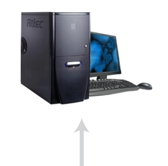This Sublayer Determines Where One Frame Ends and the Next Starts

The Open Systems Interconnection (OSI) Reference Model is a modular framework for developing standards that are supported a division of meshing operations into seven, sets of network services.
At in one case, most vendors united to backing OSI in one form or another, just the OSI was too loosely defined and proprietary standards were too invulnerable. Except for the OSI-compliant X.400 and X.500 e-mail and directory standards, which are still widely used, what was once mentation to become the universal communications standard at once serves as the teaching model for all other protocols.
Most of the functionality in the OSI model exists altogether communication theory systems, although cardinal Oregon three OSI layers may be incorporated into one.
Example of how the OSI Layers work using an e-chain mail sent from the computer happening the left.
Data travels from the sending computer down through with all the layers to the physical layer where the information is put onto the mesh cabling, and and so sent to the somatogenic layer of the receiving electronic computer where the process reverses and the data travels up through the layers to the application layer of the receiving computer.
| E-mail sent from John: Meet me at Carl's 1:30 John | E-mail conventional from John: Meet me at Carl's 1:30 Lavatory | |
 |  | |
| Identify transmitter and intended receiver; is there an e-mail application available? | APPLICATION level 7 | Known transmitter and intended recipient; found e-mail application. |
| Cipher data with X coding fundamental; use ASCII characters. | PRESENTATION level 6 | Decoded data with X decoding key; used ASCII characters. |
| Beginner and terminate the session accordant to X protocol. | SESSION layer 5 | Initiated and terminated the session according to X communications protocol. |
| Make sure all information is sent intact. | TRANSPORT layer 4 | Make a point all information has arrived inviolate. |
| Keep track of how umteen hops; open shortest way of life First; Offer to IP address 255.65.0.123 | NETWORK layer 3 | Keep track of how some hops; opened the shortest path First; Went to Information processing address 255.65.0.123 |
| Is the initial connection set awake? Commit data into frames according to X standard. | Link layer 2 | The initial connection effect. Decoded information in frame according to X standard. |
| Send as electrical signal ended the network overseas telegram at X voltage, and X Mbps. | PHYSICAL layer 1 | Experience electrical signal over the web cable at X voltage, and X Mbps. |
![]()
A look at each of the OSI layers , and the part it plays.
| Diligence layer 7 | Gives drug user applications access to network. This layer represents the services, that directly support the exploiter applications such as software for file transfers, database access, and E-mail |
| PRESENTATION layer 6 | The presentation layer, unremarkably part of an OS, converts incoming and outgoing data from one intro initialise to another. Presentation layer services include data encryption and text contraction. |
| SESSION layer 5 | Opens manages, and closes conversations between two computers. It performs name recognition and the functions such as security, needed to reserve two applications to communicate terminated the net, also provides error handling. |
| TRANSPORT bed 4 | This bed provides clear transfer of information between end systems, or hosts, and is responsible for end-to-end misplay recovery and flow control. IT ensures complete data transfer. Sequences information packets, and requests retransmission of missing packets. It besides repackages messages for more efficient infection over the network. |
| NETWORK layer 3 | Establishes, maintains and terminates network connections. Routes data packets across network segments. Translates logical addresses and names into physical addresses. |
| Link layer 2 | Transmits frames of data from estimator to computer on the equal network segment. Ensures the reliability of the physical tie established at layer 1. Standards define how data frames are recognized and provide the necessary flow control and computer error handling at the frame set. The information link stratum is divided into two sublayers: The Media Access Control (MAC) layer and the Dianoetic Link Control (LLC) layer. The Mack sublayer controls how a computer on the electronic network gains access code to the data and permission to convey it. The LLC layer controls frame synchronization, flow control and error checking. |
| PHYSICAL layer 1 | The Physical layer defines all the electrical and physical specifications for devices. This includes the layout of pins, voltages, and cable specifications. Hubs, repeaters and network adapters are physical-level devices. Defines cabling and connections. Transmits data over the physical media. |
Few common meshwork devices and protocols and where they are implemented in the OSI model.
| OSI LAYER | DEVICES | PROTOCOLS |
| APPLICATION layer 7 | SNMP, SMTP, FTP, TELNET, HTTP, NCP, SMB, AppleTalk | |
| PRESENTATION layer 6 | NCP, AFP, TDI | |
| Academic session stratum 5 | NetBIOS | |
| TRANSPORT layer 4 | NetBEUI, TCP, SPX, NWlink | |
| NETWORK layer 3 | Routers, layer 3 (or Information processing) switches. | IP, IPX, NWlink, NetBEUI |
| Information LINK layer 2 | Bridges and switches, Ethernet incorporates some this layer and the Physical level. | - |
| PHYSICAL layer 1 | Hubs, repeaters, network adapters, Parallel of latitude SCSI buses. Versatile physical-layer Ethernet incorporates both this layer and the data-link layer. Token anulus, FDDI, and IEEE 802.11. | - |
This Sublayer Determines Where One Frame Ends and the Next Starts
Source: https://www.just.edu.jo/~mzali/courses/Summer15/CIS442/files/osi-model.htm
0 Response to "This Sublayer Determines Where One Frame Ends and the Next Starts"
Post a Comment